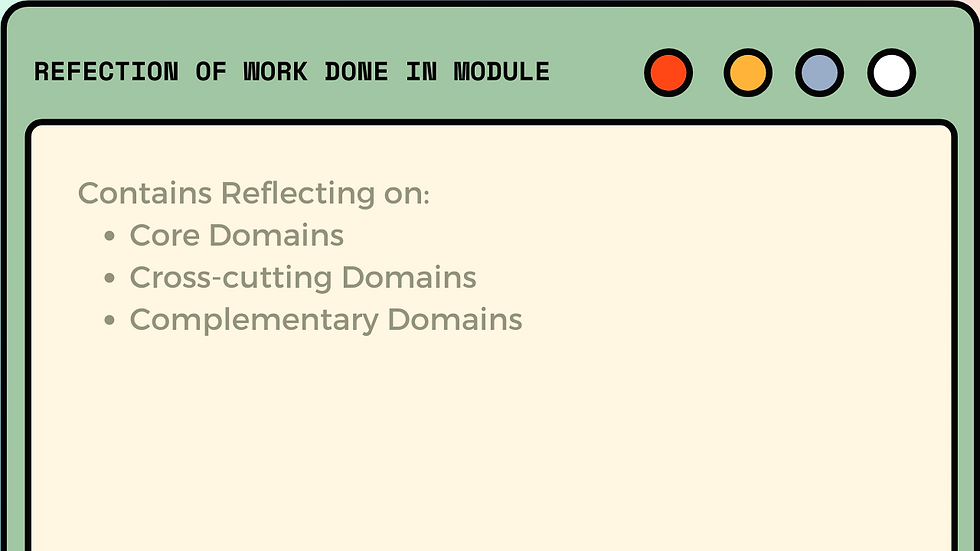Week 4 Reflection
- 2428616
- Sep 16, 2022
- 3 min read
Updated: Nov 2, 2022
In week 4 we focused on how art, and literature can define health. We first revised the WHO definition of health, which is “Health is a state of complete physical, mental and social well-being and not merely the absence of disease or infirmity.” (World Health Organization 2022) Then we analysed art and how it can help us define what health means. The first piece of art that we looked at was The Waiting Room by Gerald Sekoto in 1940. The painting shows a woman, her husband, and their child. They are health seekers, but they are far behind. The lady looks hopeful, the baby uncomfortable and the man is slumped over very tired. This painting shows how accessing care is often a prolonged process for people who are caregivers (mostly women), old and poor. It shows their disadvantage, that hope sometimes is not enough to get the level of care that people need because the health system has put them at a disadvantage. Another disadvantaged group, occasionally, is chronically ill patients or people who are likely not to recover.
The second painting The Doctor by Luke Fildes in 1891. The painting shows a doctor next to a terminally ill child. The doctor next to them, even though they do not have a cure. The doctor instead offers his presence and acknowledgment of life. This piece of art emphasises the importance of compassion in the health system. The third painting, The Mining Doctor by William Kentridge in 1999, is set in 1886 to 1899. The painting is from the artist’s perspective of the artists trying to understand the illness that the miner is experiencing and the burden of disease on the young ambitious man who was trying to provide for his family or even just climb in social status. The artist used the miner and the mining doctor to interrogate the meaning of health in South Africa. William Kentridge also did paintings of HIV and AIDS and Tuberculosis. This painting places importance on health systems that put preventative measures in place to take care of a community.
The last piece of art that we looked at is The Flemish Plague Triptych (the 1700s) and the Keiskamma Triptych. The second painting drew inspiration from the other, both are about the journey of people through their illnesses and teach compassion.
Then the focus was on the history of health and human rights in South Africa. health as a right is a 20th-century phenomenon. It began as people tried to answer what it meant to be human through movements such as anticolonialism and defining what it meant to be working class, a peasant, and a serf. Wars and epidemics brought the idea of health rights to be fully realised. The WHO organisation was formed. The right to health is fundamental to the physical and mental well-being of all individuals and is a necessary condition for the exercise of human rights. The right to health is provided is in three sections of South Africa’s constitution. These provide access to healthcare services including reproductive health, emergency medicine, basic healthcare for children, and medical services for detained persons. Now let us reflect on South Africa’s history with health rights.
During apartheid, South Africa was not upholding some articles of faith that it had signed with WHO. Money on healthcare was spent differently depending on gender and race. It was applied loosely to white people and even less to people of colour. In the 70s and the 80s, people of colour began to demand healthcare rights. People Health Society was formed with people from civil society and faith-based organisations. Health as a right was incorporated into the struggle for equal rights in South Africa. During apartheid, there were also court cases that were brought against the government for not fulfilling its end of the bargain.
References:
South African Human Rights Commission. (n.d.). Access to Health Care. [online] Available at:https://www.sahrc.org.za/home/21/files/FINAL%20Access%20to%20Health%20Care%20Educational%20Booklet.pdf [Accessed 16 September 2022]
Moyo, K. (2017). Realising the right to health in South Africa. [online] Available at: http://www.fhr-mirror.org.za/files/7215/1247/1732/Health.pdf [Accessed 16 September 2022]
Child, C. (2018). Life Esidimeni: Moseneke finds officials behaved unconstitutionally. [online] Available at: https://www.timeslive.co.za/news/south-africa/2018-03-19-officials-in-esidimeni-behaved-unconstitutionally-finds-moseneke/ [Accessed 16 September 2022]


Comments